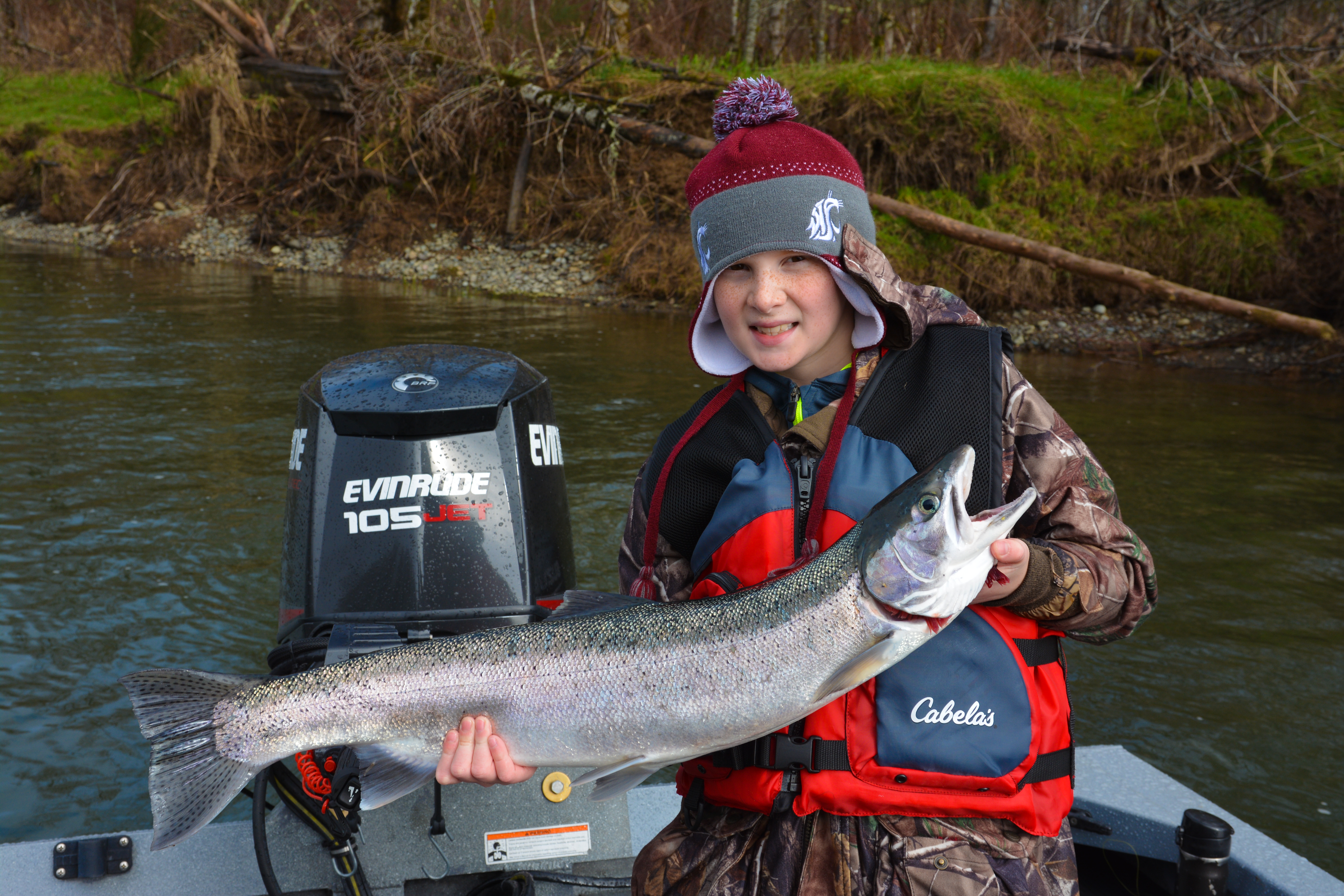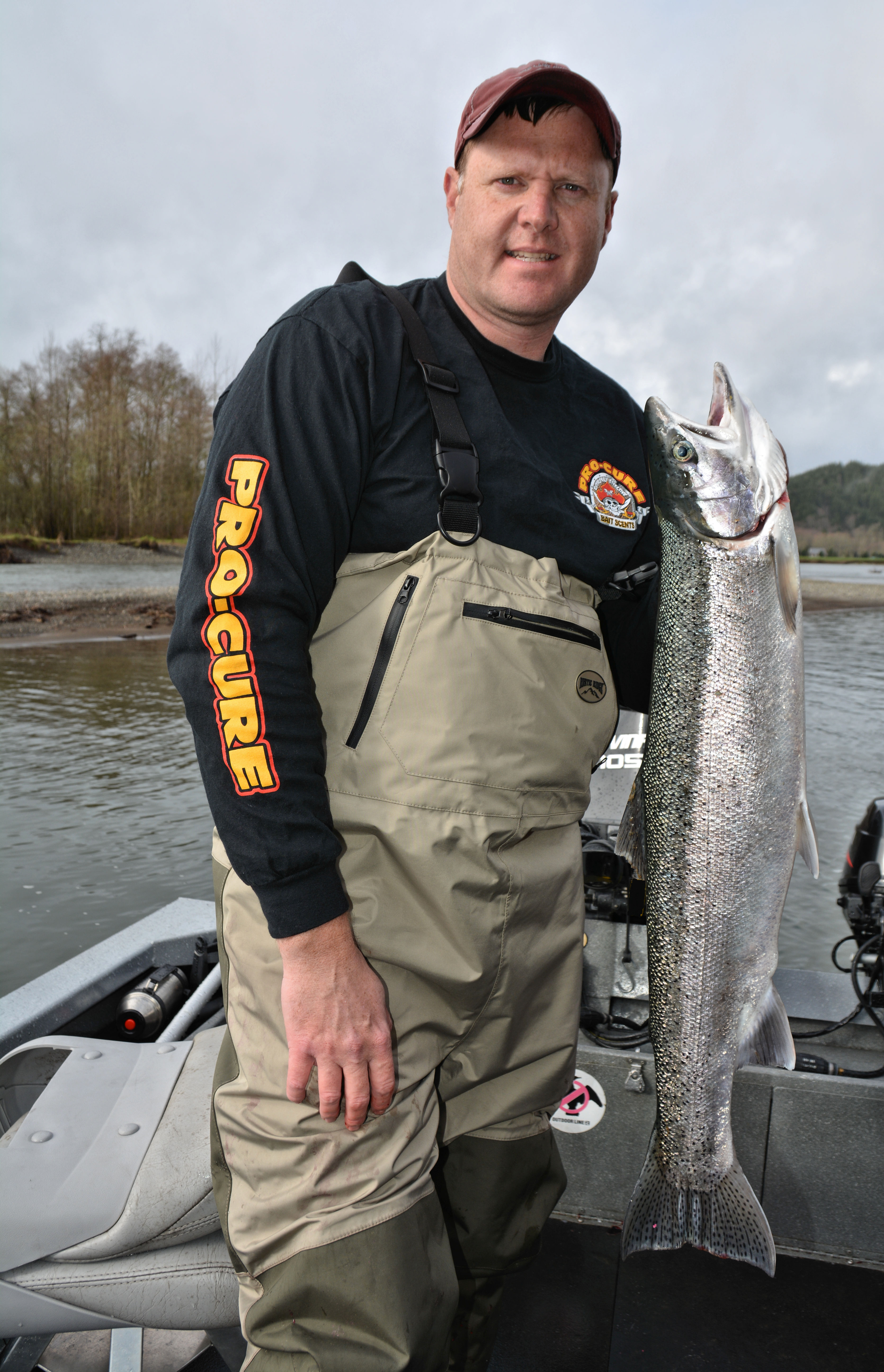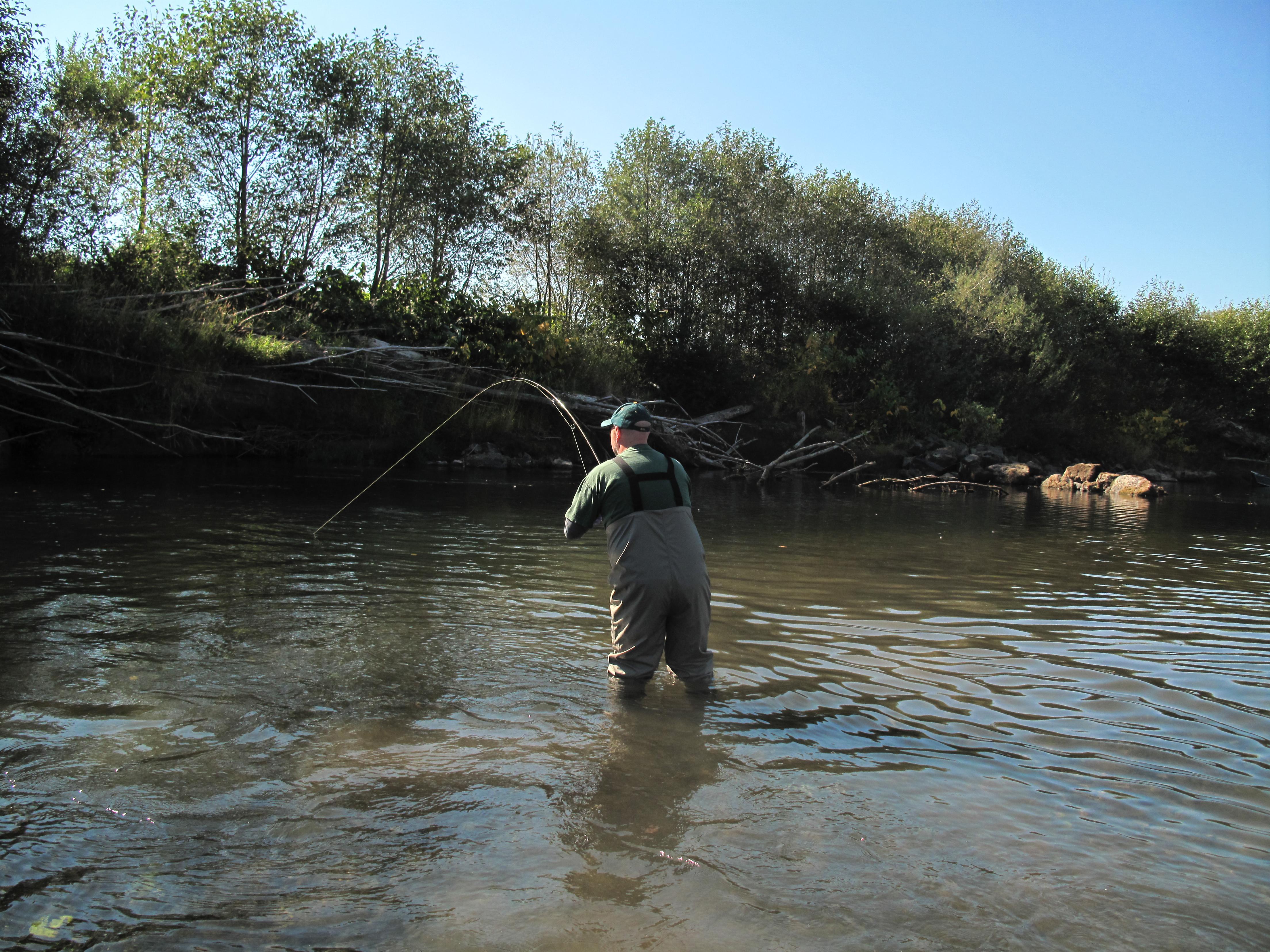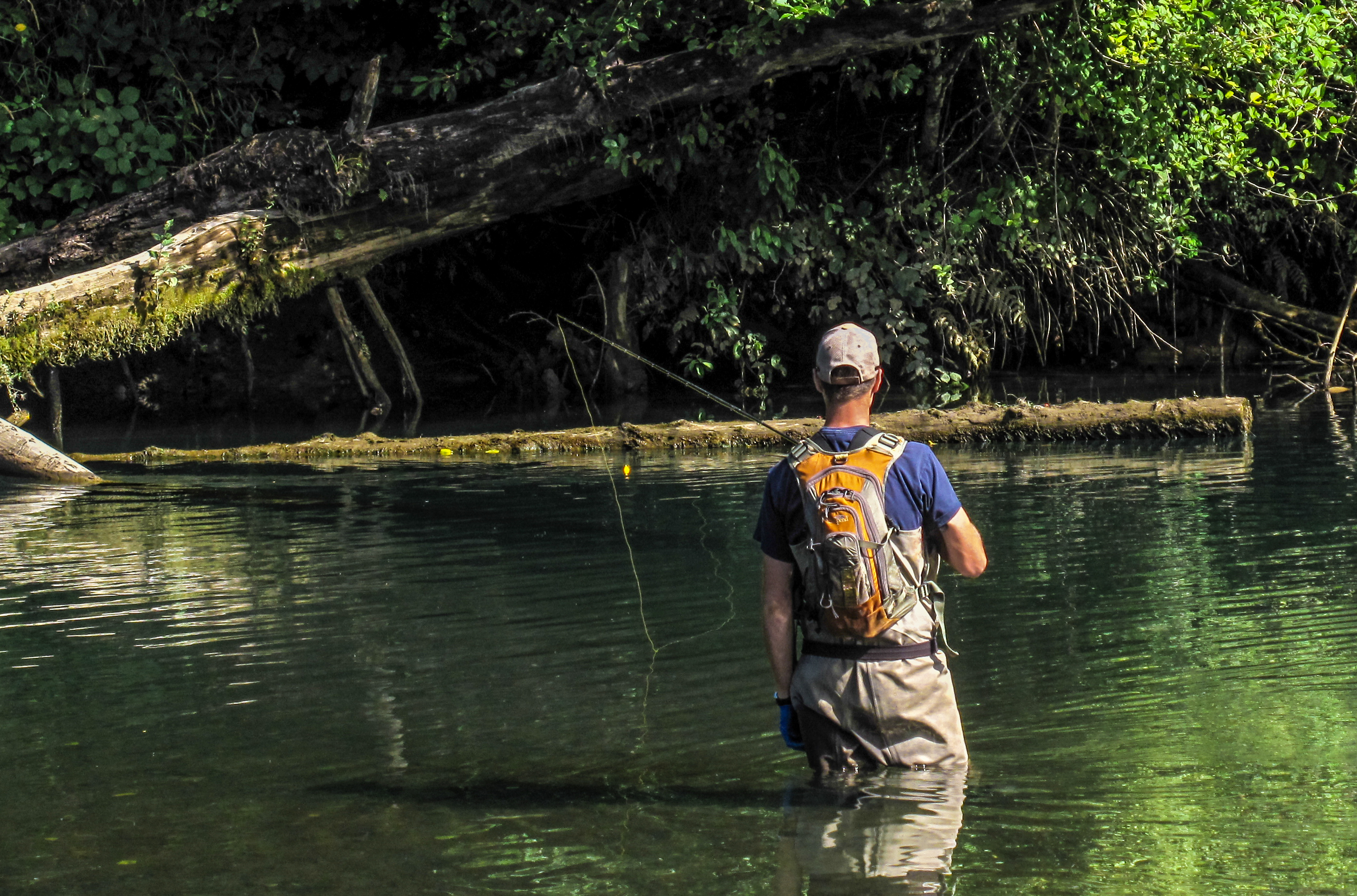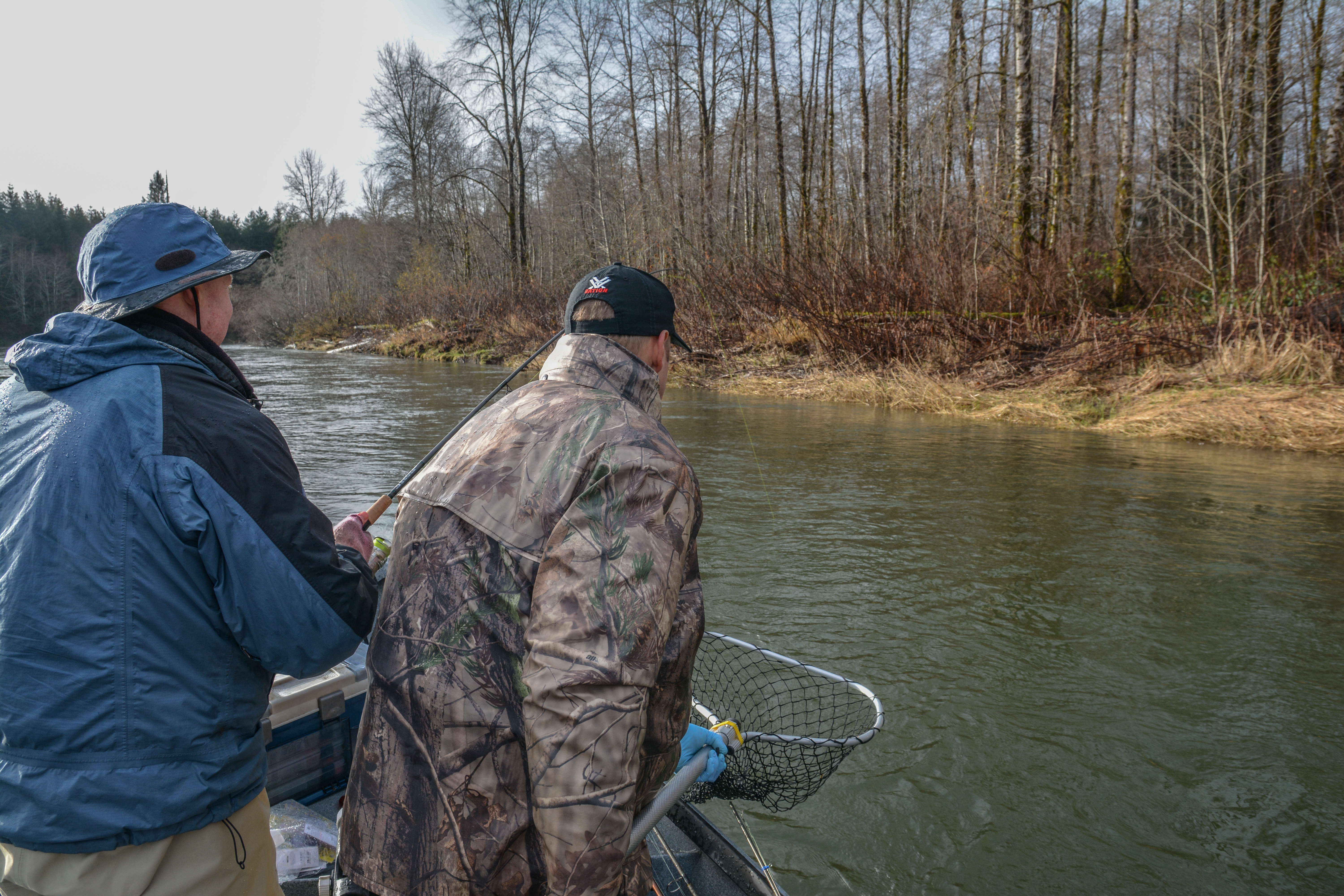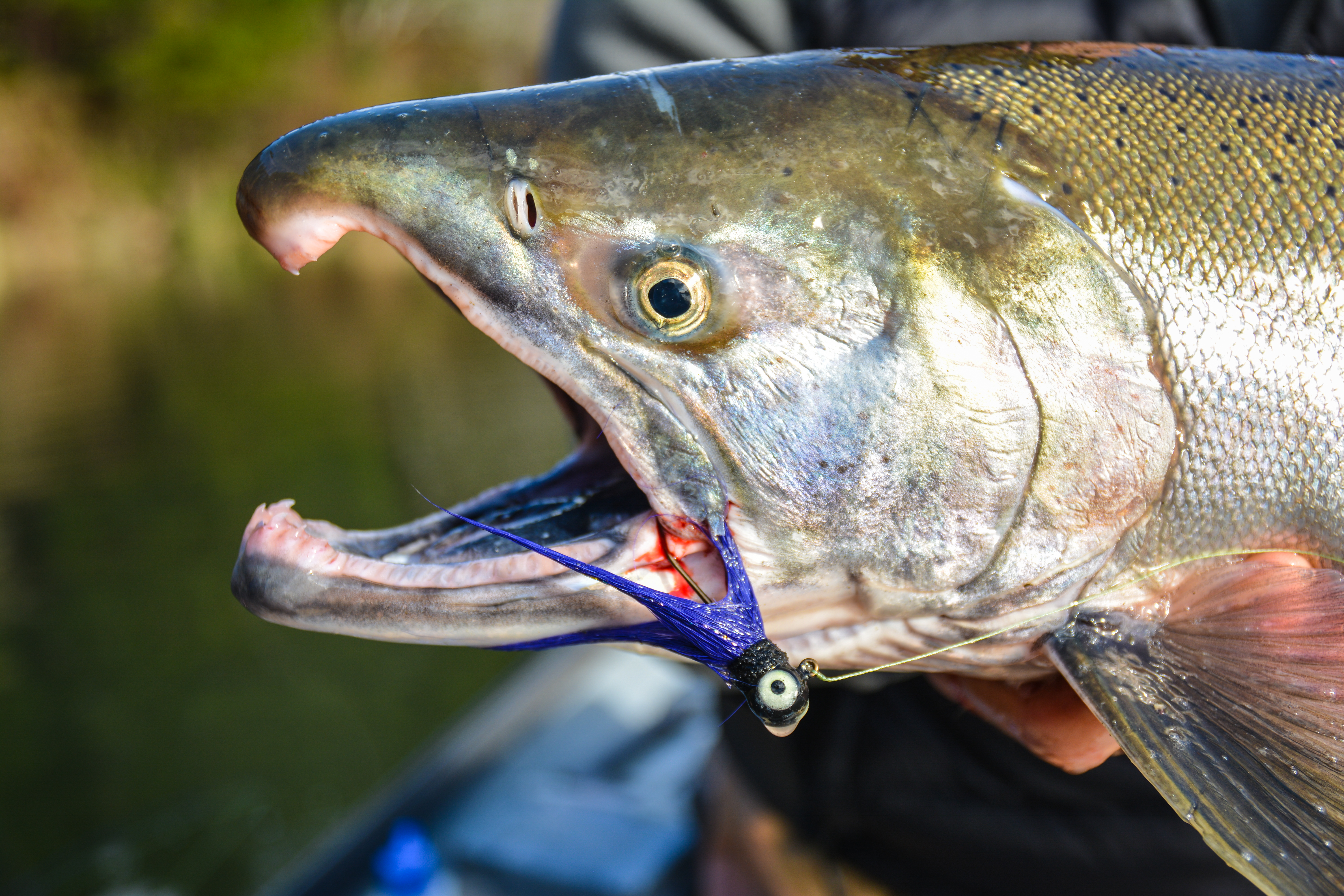Search
Latest Articles
Fishing Pocket Water
by Jason Brooks, August 05, 2018
I pulled anchor and told my buddies we were moving on. We floated past the guides and their clients who were still trying to cast to that perfect spot and hope their bobber disappeared. As we neared where the fish rolled I told my friends to get ready and cast into a small window between tree branches then drop their rod tips to the water so the line goes under the overhangs and to keep an eye on their floats. To our surprise the fish grabbed the first bait and the fight was on. One thing I didn’t take into account was that the fish would be strong, unlike the fish kegged up in the deep water this was a fresh fish and just as quickly as it grabbed the bait it took off for some structure and broke off.
Fishing small areas where fish are holding as they move up river can be very productive. This is known as “pocket water”, small areas that only hold one or a few fish. Unlike deep holes or “holding water” the fish that are in pocket water are not hanging out waiting for rains or cold temperatures. Instead they are often aggressive and fresh as well as on the move and are taking cover to stay safe while taking a short rest or are using the cover to move up the river.
Pocket water is hard to fish, any angler who has twitched jigs for fall Coho knows that losing gear and fish is part of the game. Salmon and steelhead both use these “pockets” and when there is a lot of pressure on a river from anglers in the traditional fishing areas these small areas often produce the best fishing. Most steelhead fisherman have actually been fishing pocket water without even knowing it. A slight depression behind a boulder, a stump in the middle of the river creating a seam, or a cut-bank along a gravel run are all places that you can find steelhead. Coho are found in log jams but they also like hiding under single logs or in small cuts lined with grass. Points that jetty out into the river create a current break and fish will often rest behind them.
Fishing the Humptulips river one late fall we drifted along and noticed a long stretch of the river where most of the water was only a foot or two deep. As I rowed down I thought to myself where would a pod of salmon go to make it up the river. Looking to the far edge the bank was lined with long grass. One of our favorite twitching holes had a small cove with the same tall grass. My fishing partner shortened his slip float to three feet and threw it right next to the bank. Ten feet later his float went down and he landed a nice hooknose. We dropped anchor and fished the edge for a few more casts and picked up another fish.
Other boats passed by not giving us much attention. Now each time we float the river we make sure to stop and fish this bank. It always holds Coho and so far not another single boat has stopped here and we have never seen anyone else ever fish it.
This past Fall while again floating a low and clear river I came around a corner to find another friend anchored up right between two log jams. He actually tied off to one of the logs and the cut to make it through was barely wide enough for two boats. I pulled on the oars to slow down and figure out why he would park in such a tight spot. Then I noticed him grab his net as another angler set the hook and fought a fish. They were fishing right along the other log jam only a few feet away. As he netted the bright fish I drifted down to him and he said that was the third fish they pulled out of the small slot. I asked if he wanted me to hold up so they could fish it some more as my boat would have to pass right over their spot if I tried to go through. Luckily this was their last fish to make their limits and I passed by. We both laughed as we talked about all of the other boats stacked up in the deep holes and catching dark fish.
Like I mentioned above, pocket water is often small places with structure and if you don’t have the right gear you will probably lose fish. Since the fish don’t have much time to react to the bait or lures you don’t have to worry about finesse fishing. For salmon a stout rod and reel combo with strong lines and hooks helps when you need for force a fish away from a sunken log. I prefer to fish nine and a half foot spinning rods that are a medium-heavy action. My reels are often 4000 series and fifty-pound braided line. Leaders are very stout with twenty-pound as a minimum but I mostly use twenty-five-pound monofilament which also helps with short leaders as the stiff line doesn’t flutter around and catch limbs or other objects. On the end of the leader is a 2/0 hook as this wire is often strong but the point is small and super sharp. A few split shot on the leader and a ½ ounce to ¾ ounce weight as you want it to drop down as fast as possible. Most casts are short but need to be precise which is why I prefer to use the spinning outfit, though a level wind reel has a much better drag system. Steelhead can be much more finicky but to accommodate this I run fifteen to twenty-pound fluorocarbon leaders as you still need to be able to force the fish away from any structure.
When you hook a fish you need to be able to pull it away from the structure. You can do this by holding the fish and simply floating downriver to an opening using the current and the pull of the boat to help hold the fish and move it away from the structure. If you are anchored up, then using brute force is needed and often times the fish wins the battle. This is where a stout set-up makes a big difference.
Other pockets of water to concentrate on are shadows on bright sunny days or when the water is low and clear. Salmon have a natural camouflage to them but they still fear predators from above so they take to hiding wherever they can. And since fish don’t have eyelids the bright sun can affect them including turning off the bite. This is why the early pre-dawn hours are so good for salmon fishing. But during the mid-day drift make sure to fish any areas that have a shadow or are protected from direct sunlight.
Water depth is another place to focus on. A one or two-foot difference, especially in low water, is all that is needed for fish to hold. Steelhead are notorious for this, especially when it is at the head of a pool, in a tailout, or behind some obstacle in the river. Turbid water creates cover so if you find a small seam at the head of a pool where water is being churned make sure to hit that spot with your gear. Float fishing or drift fishing catches fish, just make sure you use enough weight to get the lure or bait down to the fish right away or else it will go right over their heads and they won’t leave the cover and oxygenated water to chase after your offering. That is probably the biggest key to fishing pocket water where a few feet might be all you have to target fish. You need your gear to get in front of the fish as soon as possible.
Recognizing pocket water is crucial to increasing your success. Like I mentioned at the beginning of the article where I saw the fish roll under the tree branches, knowing where to throw the baits before floating by the spot is key to fishing pocket water. Keep a lookout for areas of cover and realize this is the kind of water you need to be fishing when the water is low and clear or while floating between holes. You will increase your catch rates and get away from the crowds making for a much more enjoyable time on the river.
--------------------------------------------------------------------------------------------------------------------------------------------------------------------------------
Jason Brooks hails from North-Central Washington. The son of a fishing guide, Jason is an avid hunter, angler, outdoor photographer and published writer. He resides in Puyallup with his wife and two boys.
